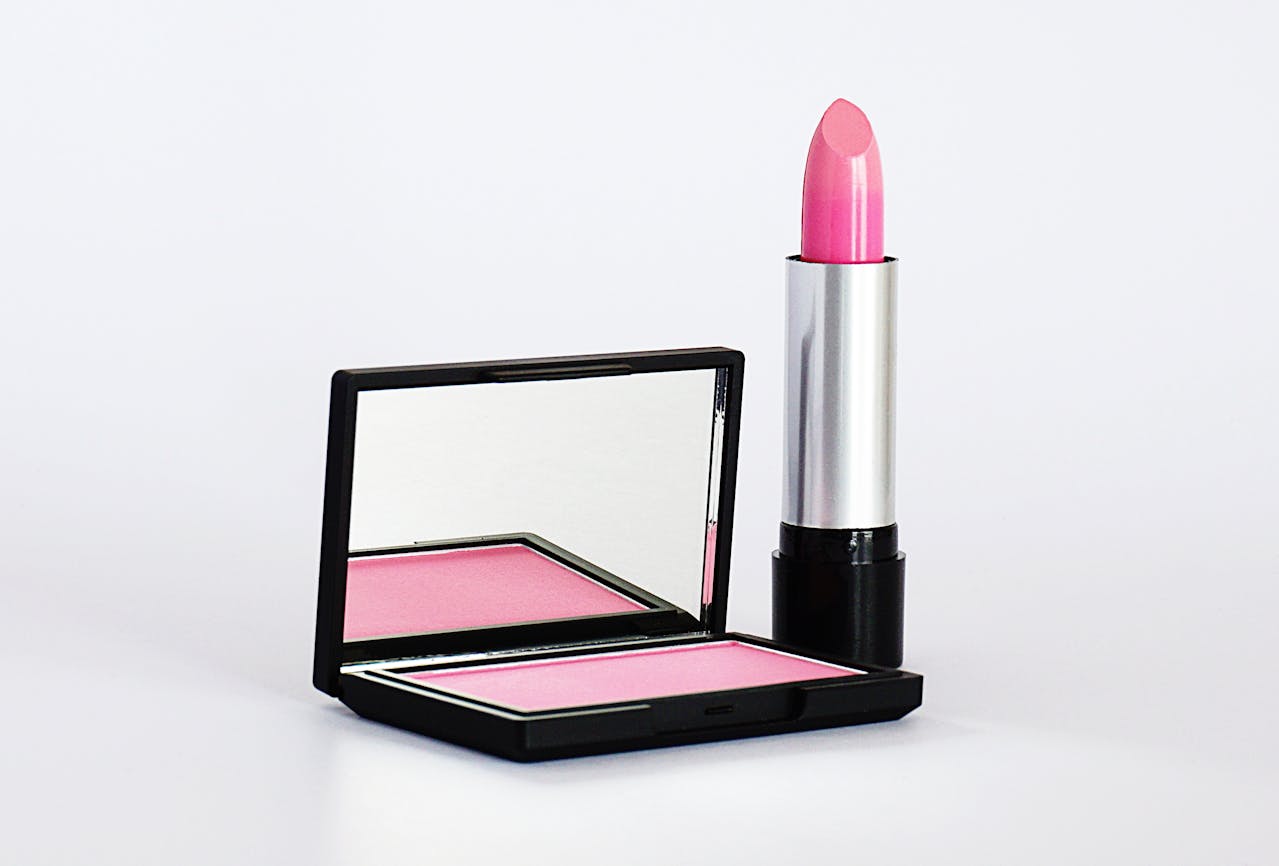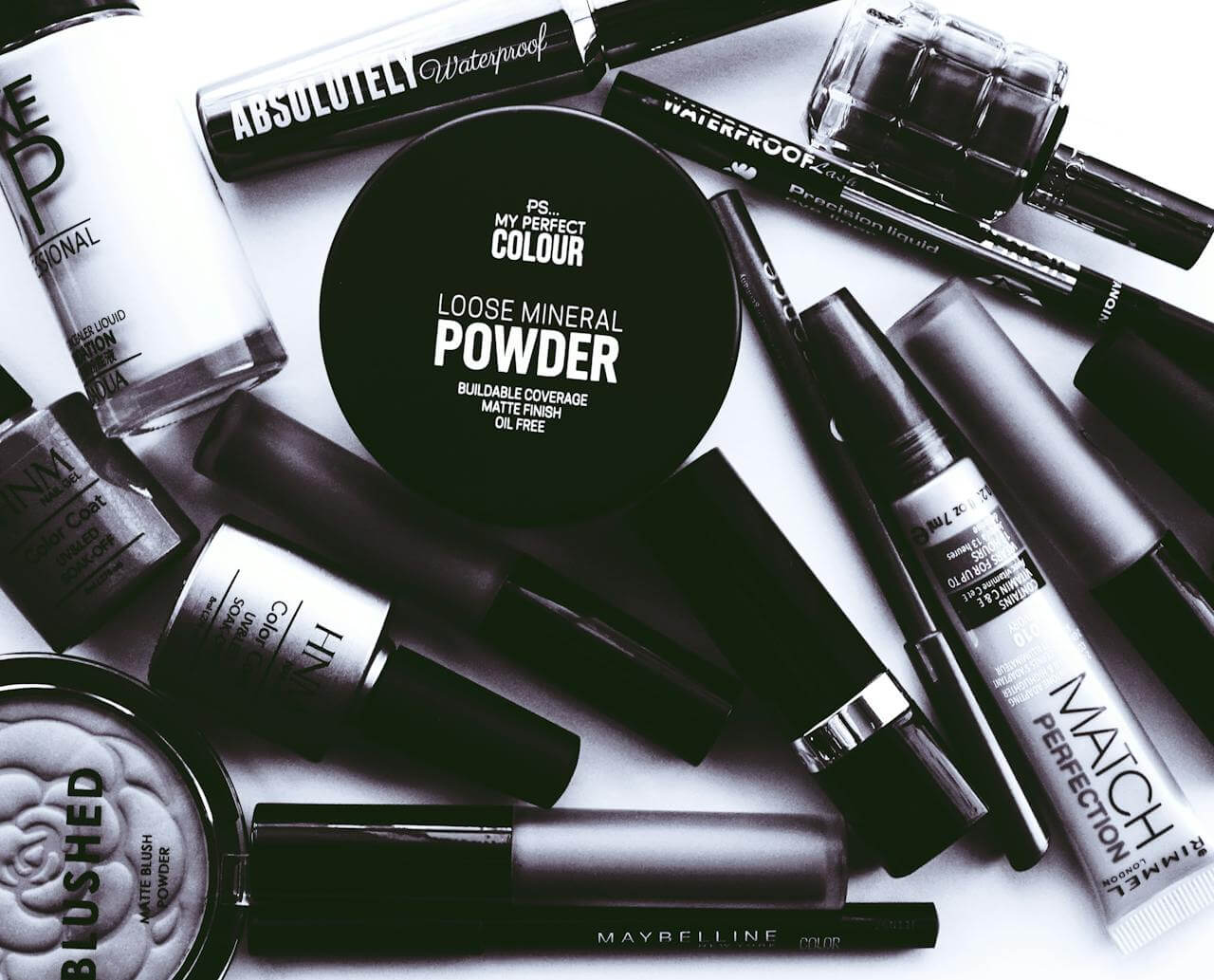Cleaning makeup stains from fabrics and surfaces involves different techniques depending on the type of makeup. For foundations and powders, use washing or washing-up liquid and rinse well. For lipstick and mascara stains, use shampoo, washing-up liquid, or alcohol as pre-treatment, then wash. Nail polish requires quick action with nail polish remover, considering the fabric type to avoid damage.
Makeup is beautiful. Makeup is delightful. Makeup is a lot of fun. But only when it’s on your face (or the face of the lady in your life) or nicely presented on the packages. It’s another story: all over the dresser, smeared on the pillow or smudged onto your collar. Exactly how makeup gets onto fabric can vary from household to household – someone can go to sleep with makeup on (putting it on the pillow), toddlers can play dress-up with Mummy’s makeup with disastrous results on clothing, the cat can knock over a bottle of foundation or a bit of snuggling and snogging can leave a guy’s white shirt covered with lipstick.
Now what? How do you get the stuff off again?
Antiperspirant
This isn’t makeup, but as it’s usually sold and stored alongside other cosmetics, it will be included here. It leaves white marks, especially on black clothes. Use a paste of equal parts baking soda and salt mixed with a bit of water and rub this onto the stain. Leave it for half an hour before rinsing off with cold water. Ammonia and white vinegar can also help remove these marks.
Moisturiser, face cream and hand creams
Scrape off excess and be very careful not to spread it everywhere. Use hot water (if the fabric can handle it) and scrub with an old toothbrush, working from outside the spot inwards. A bit of the usual natural house cleaning product – baking soda can help. Then wash as usual, with biological washing powder if possible.
Foundation
- Wet the stain and rub it in with washing liquid, shampoo, hand soap, or toothpaste.
- Rub well and rinse.
- Repeat if necessary (sounds like the old instructions for washing hair).
- Wash as usual.
Hair dye
About the worst stain to remove, so act quickly (better still, don’t dye your hair at home!). Soak immediately in cold water and rub it like anything. Use washing-up liquid to help get the stains out. White vinegar and lemon juice can also help bleach the stain. Good luck – these stains are next to impossible to remove, as hair dye is designed to withstand shampoo (a detergent) and hairspray (which can remove permanent pen). Henna is a bit easier (just), as it can be treated with meths or ammonia, similarly to grass stains. Consider dyeing the entire thing stained with the dye to cover the spot.

Lipstick
This is another beast to remove, especially long-lasting or kiss-proof lipsticks. Found on collars, pillowcases and (worst case scenario) smudged into carpets and wallpaper by a small inquisitive child. Scrape off as much excess as you can. Wet the spot with warm water, then rub in shampoo, washing-up liquid, or toothpaste and rub well before rinsing. Alternatively, use meth or some other alcohol (including vodka) as a pre-treatment. Wash as usual. It is possible to remove lipstick marks on silk by putting sticky or masking tape down on the stain and ripping it off quickly—it will take the lipstick off.
To remove lipstick stains from carpets, scrape as much as possible with tissues, toilet paper, rags, etc. Try not to spread the stain. Soak the area with meth or strong alcohol (again) and blot up. Then, scrub like hell with a medium-stiff brush and warm, soapy water. Keep going until the stain disappears (it will, eventually—keep at it). Blot dry.
Once again, remove lipstick stains from wallpaper by wiping off excess with a tissue or a paper towel, etc. You can also remove baking soda paste and water with a toothbrush or toothpaste.
Mascara
Dampen the stain with warm water, rub in some washing-up liquid, and scrub it with an old toothbrush. Wash as usual. Meth, rubbing alcohol, or vodka can also be used as a pre-treatment before washing the item.

Nail polish
The Big Daddy of stains to clean up. Act quickly, especially if you have a quick-drying formula. Wiping up is your first step, which you should follow by applying whatever nail polish remover you prefer. However, be careful. While using nail polish remover is an acceptable way to get nail polish stains off sheets and most natural fibres (and most hard floor surfaces), the chemicals in nail polish remover are likely to play merry hell with certain artificial fabrics (especially acetate-type fabrics) and the “finishing” on wood. You can consider yourself lucky if you can escape without damaging the wood and leaving a white mark. It’s tricky, but you can try freezing the nail polish with an ice cube before it sinks in and then picking it off carefully. If you are reduced to using a little nail polish remover to get the spill off wood, apply a good wood polish to the spot after cleaning to restore the finish.
Powder (also includes powder blusher and powder eyeshadow)
It tends to go everywhere like dust. Fortunately, because it is dry, it is easy to clean up. Use a vacuum cleaner or a damp duster to pick up stray bits.
Eyeliners and lip pencils
These are mostly grease stains, and they will come off with either glycerine, scrubbing with warm, soapy water, or (in the case of wallpaper) baking soda.
Perfume
Unlikely to stain much if spilt if the perfume is unmistakable and it’s fallen on fabric – leave it and enjoy. If it ends on wooden surfaces, blot it up immediately and apply wood polish once the area is dry to restore the finish. Slightly tinted perfume should be diluted with vinegar or strong alcohol (which perfume mostly is, incidentally) and blotted up. Be nice to yourself: don’t just blot a perfume spill up with a rag. Use a hanky or something nice to carry the scent around so the perfume isn’t wasted.

